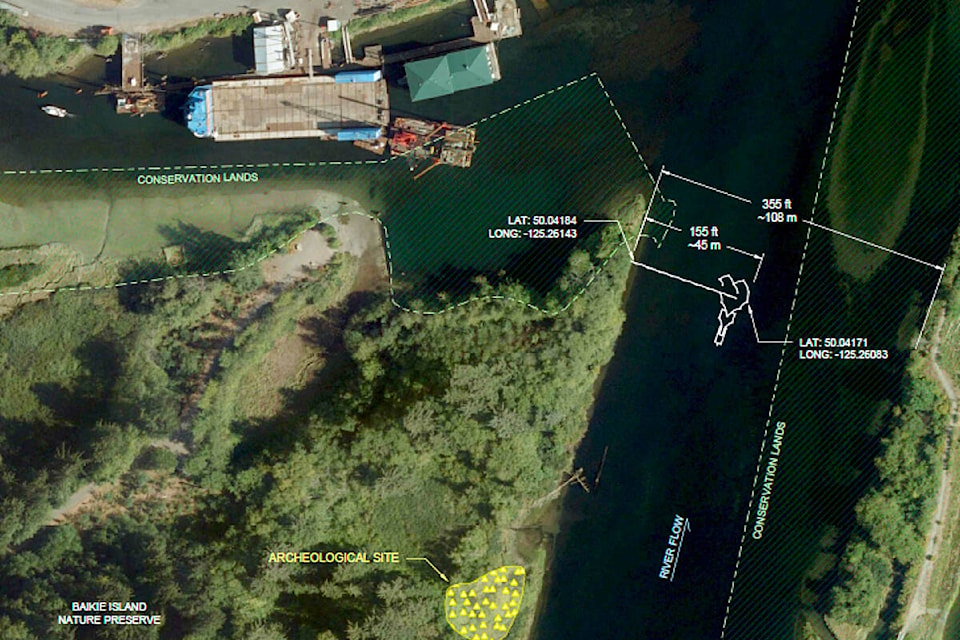A traditional-style First Nations salmon trap could be coming to Vancouver Island in time for a late summer test drive next year.
Pending regulatory approval, construction is expected to begin this summer on a fish trap in the Campbell River estuary that will selectively harvest hatchery-marked salmon from August to November of 2025.
The $1.14-million project is funded by DFO’s BC Salmon Restoration and Innovation Fund (BCSRIF) and will provide salmon for three local First Nations to meet food, social and ceremonial needs.
According to information on the BCSRIF website, the project involves the construction and operation of a tidal waters selective fishery salmon trap close to a traditional First Nation fishing site in the Campbell/Quinsam rivers estuary.
“Historically, heart and chevron-shaped traps were used extensively by First Nation communities along the estuary to capture adult salmon prior to the development of commercial fisheries,” BCSRIF says.
“Recent revitalization of fish traps as a terminal fishery in other areas along the coast has been shown to be successful at catching and selectively harvesting hatchery-marked salmon species while releasing wild (unmarked) salmon and steelhead of conservation concern.”
The initiative is expected to develop First Nations’ capacity for sustainable salmon stewardship through the development of the best selective harvest fishing methods possible in traditional fishing areas while preserving wild stocks of conservation concern.
The trap will be comprised of approximately 29 piles driven in a line perpendicular from the estuary’s west bank. Additional piles will create the heart of the trap at the end, extending approximately 45 metres from the bank. Black nylon mesh nets will be strung between the pilings from the shore to the heart of the trap when the trap is in use and removed when it is not.
All works and infrastructure related to the fish trap will be located in-river, below the high-water mark, and accessed by boat from the mouth of the river.
An assessment conducted from July to October 2023 using gillnetting and sonar led to the selection of the proposed site. It was chosen because it is a passage corridor for migrating salmon and has sufficient depth to accommodate the trap infrastructure and allow it to fish through the tidal cycle.
DFO communications advisor Michelle Rainer, said several approvals are still needed before the project can proceed:
- A scientific licence from Fisheries and Oceans Canada (DFO) in order to collect fish. There will be no retention of fish in the first year of the project.
- A DFO Fish and Fish Habitat Protection Program review to avoid and mitigate potential impacts to fish and habitat during construction.
- A provincial construction and placement permit.
- Transport Canada approval.
The site is upstream of most marinas in the river which is expected to minimize interactions with boat traffic.
Transport Canada is collecting feedback from area users on how the project may affect their ability to navigate past the site. The deadline for comments is March 12, 2024.
The project is a partnership of A-Tlegay Fisheries Society, the We Wai Kai First Nation, Wei Wai Kum First Nation, LGL Limited and Wild Fish Conservancy.
READ ALSO: Funding comes to three Campbell River fish restoration projects
READ ALSO: B.C. man developing less harmful way to harvest salmon selectively
